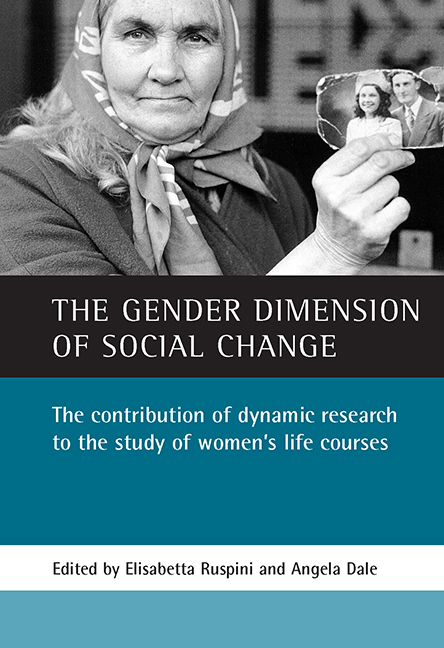 The Gender Dimension of Social Change
The Gender Dimension of Social Change two - Women and social change
Published online by Cambridge University Press: 20 January 2022
Summary
Despite all these radical [social and economic] changes … there has been relatively little change in two important social relationships … the first is that of the continuing social inequality between women and men.
The second sex is still precisely that: throughout the West, women have a lower level of professional education than men, they are paid less, have less social power, and are still assumed to have the primary … responsibility for the care of children and dependent relatives. The ‘new’ woman remains just as much a fiction (or no doubt in some quarters a spectre) as the ‘new’ man…. (Evans, 1994, pp 1-2)
The problematics of change have always occupied a central position in sociological thought (Smelser, 1981; Haferkamp and Smelser, 1992), and the modern social sciences have emerged in response to an era of very rapid social change and the consequent need for greater understanding of social, economic and political processes. Indeed, if one begins to study society only when it can no longer be taken for granted, then change is a feature of social reality that any social-scientific theory must sooner or later address.
We still live in a time of profound change, such as the transformation to a knowledge-based society, globalisation, post-industrialisation, post-Fordism, late-, reflexive-, or post-modernity, among others (see, for example, Bell, 1973; Touraine, 1974; Giddens, 1990; Bauman, 1992; Beck, 1992). On a more individual scale are welfare restructuring, the transformation of work patterns, population ageing and dramatic family structure changes (Rose, 2000).
However, even if the analysis of social change represents the touchstone of sociology, it remains underdeveloped (Wiswede and Kutsch, 1978). This may be due to the combination of two elements, one theoretical and one methodological. First is the difficulty of reconciling theories about social change – developed at the macro-sociological level – with the results of empirical analysis of the changing life course patterns of individuals. Second is the lack of longitudinal information about the social-demographic characteristics of both individuals and families (prospective longitudinal data on households became available in the US in the 1970s, but only in the 1980s in Europe) and of techniques designed to manipulate the diachronic or dynamic dimension of data.
- Type
- Chapter
- Information
- The Gender Dimension of Social ChangeThe Contribution of Dynamic Research to the Study of Women's Life Courses, pp. 11 - 26Publisher: Bristol University PressPrint publication year: 2002
